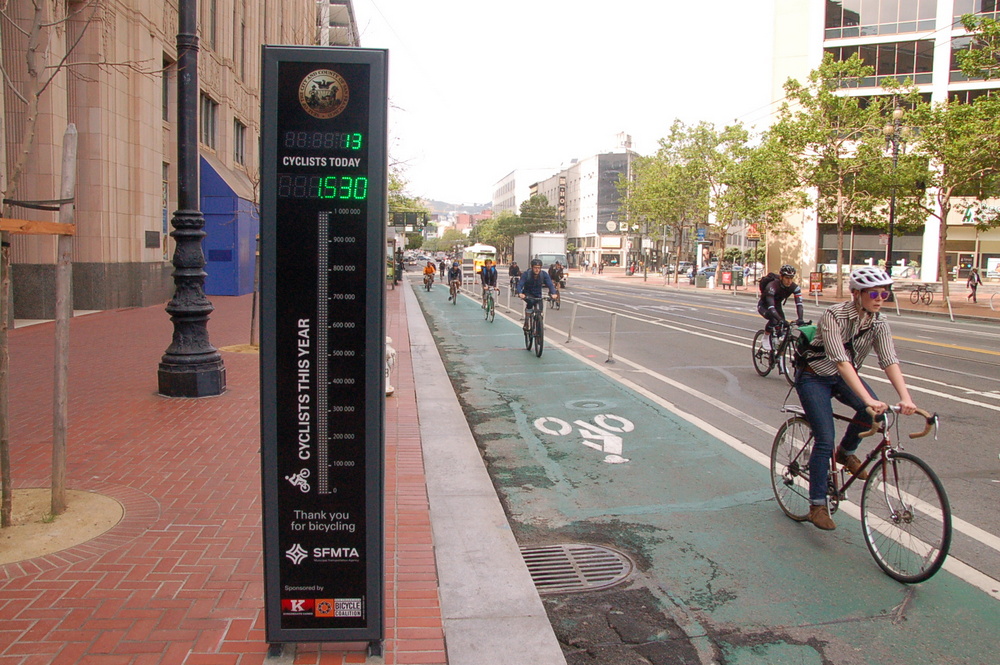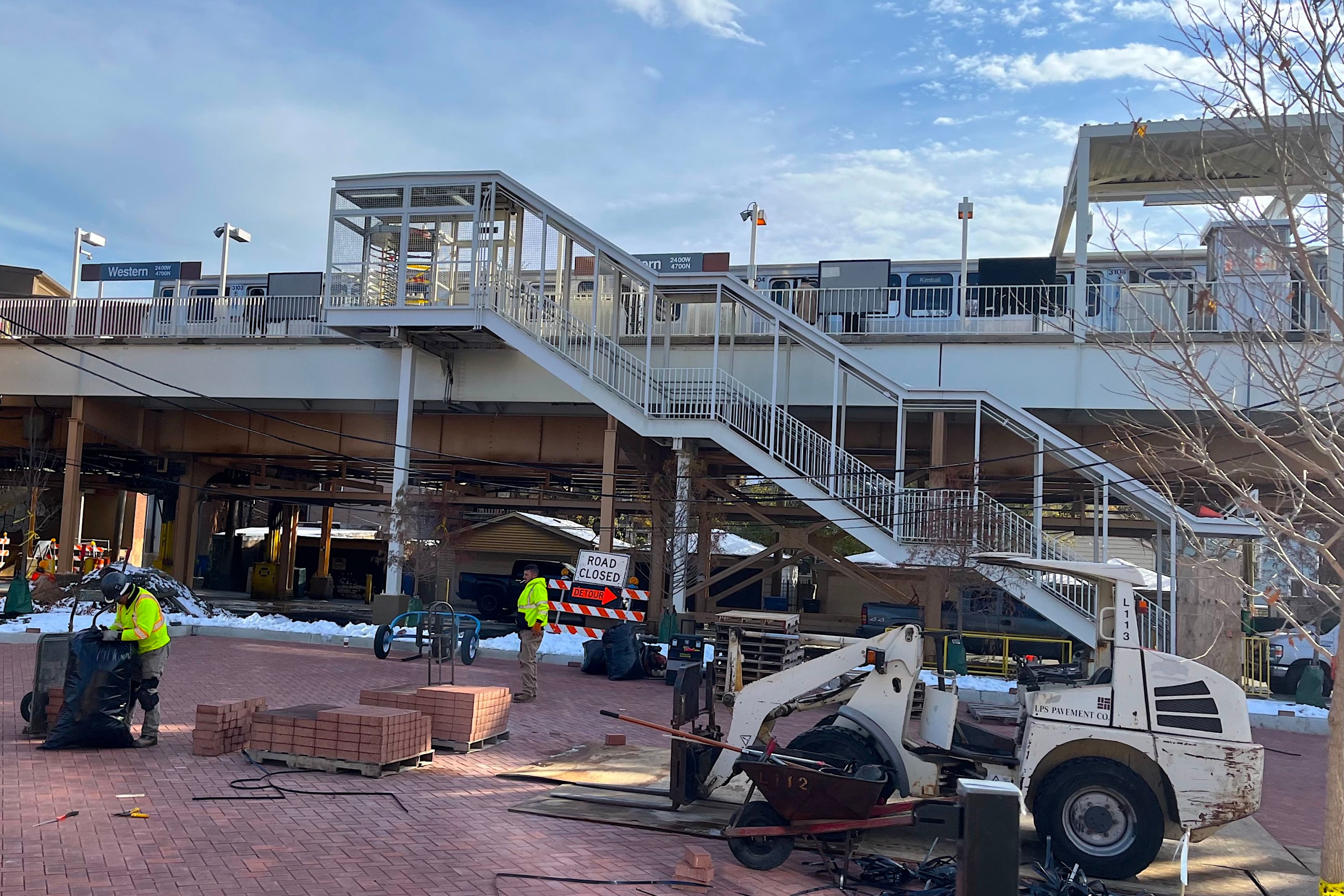Wherever there is a bike lane, there is probably an angry driver complaining that it is always empty.

San Francisco’s Market Street bike counter. Photo: U.S. DOT
That tends to be the case even when plenty of people do use the bike lane. And there are reasons for that, writes University of Minnesota professor David Levinson. Mathematical, geometrical reasons. Like the fact that free-flowing bike traffic will look much sparser than gridlocked car traffic, even when the number of cyclists using the bike lane is the same as the number of motorists in an adjacent car lane.
“The view from the dashboard, from the front window of the car, is going to be looking at the view of cars and the density is high,” Levinson told Streetsblog. “And you’re going to look at the other lane and see there’s no bicycles in it and you’re going to think nobody’s using it.”
So the view from the dashboard is, not surprisingly, skewed in a way that works against bike lanes. If you want to get a real read on how well a bike lane or a car lane is being utilized, you need to count how many people pass through each lane during a given period.
“The productivity of the system is measured by throughput,” Levinson said. Unfortunately, he added, few places do bike counts thorough enough to assess how many people are using bike lanes.
Which doesn’t mean that today’s bike lanes actually get more use than car lanes. After all, it takes a whole network of safe bike lanes to make most people feel comfortable biking for most trips, and almost all American bike networks are still pretty sparse. But Levinson’s observation highlights the fact that looks can be deceiving when it comes to bike lanes, and you can’t reach a firm conclusion based on a casual glance.





